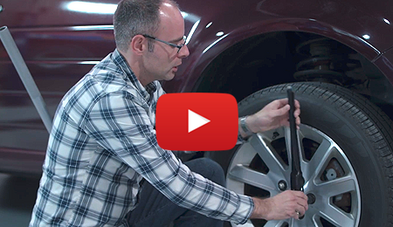Driving on winter tires in summer: a risky venture!

Is it safe to drive on winter tires all year? Is it cost-effective never to change them? Are summer tires mandatory? Does the type of tire affect vehicle handling? Here is some information that should answer your questions.
First, be aware that there’s no law requiring you to change your winter tires for summer or all-season tires when the warm weather arrives, even if from 7°C, summer tires have full traction. What in fact is prohibited is driving with over-worn tires.
The law stipulates that the tread depth (the surface in contact with the road) must be at least 1.6mm (2/32in), no matter what type of tire is on your vehicle.
Because winter tires are mandatory in Quebec until March 15 of each year, it may seem cost-effective to keep them on all year, but appearances can be deceiving.
Will you save money keep your winter tires on?

Winter tires are made of a thermal rubber that is designed especially to maintain its elasticity when the mercury falls, giving them superior road-adherence qualities in cold weather. This rubber, however, degenerates much more quickly when the temperature rises. If you decide to keep your winter tires on all year, the tread-wear indicators showing it’s time to buy new tires will appear more quickly, generally after less than 10,000 kilometres.
You may save money up front by not installing summer or all-season tires on your vehicle but you’ll soon have to spend on new winter tires.

Winter tires in summer: greater fuel consumption?
Winter tires provide greater road resistance, which not only makes them noisier while driving but impacts fuel consumption.
So keeping them on year-round is far less economical than it may seem. If you’re looking to save a few dollars, you’re better to do the annual tire changeovers yourself.
Changing to summer tires: it’s a safety issue
Exposing the rubber in winter tires to heat increases the risk of a blowout, which can cause the driver to lose control of the vehicle. The risks of aquaplaning also rise, since winter tire treads don’t shed water as effectively as those of summer or all-season tires.
The braking distance of a winter tire in summer is longer than that of an all-season tire, especially on a wet road surface. For example, a vehicle equipped with winter tires travelling at 100km/h in the rain will require a braking distance of 93.8 metres, compared with 74.3 metres on all-season tires — a 26% difference.
Driving with winter tires in summer also makes avoidance manoeuvres more difficult in emergency situations. Because tire treads soften in hot conditions, the vehicle will tend to drift if the driver attempts to make an abrupt manoeuvre.
So switching your tires at the onset of the warm weather is strongly advised, for your own and others’ safety.
Do you have questions about your vehicle or do you want to ensure you are driving safely? Ask the experts with CAA-Quebec’s Mobility Advisory Services.

Benefit from personalized advice
Do you have questions about gas-powered or electric vehicles, driving, or need recommendations to find an Approved Auto Repair Service?